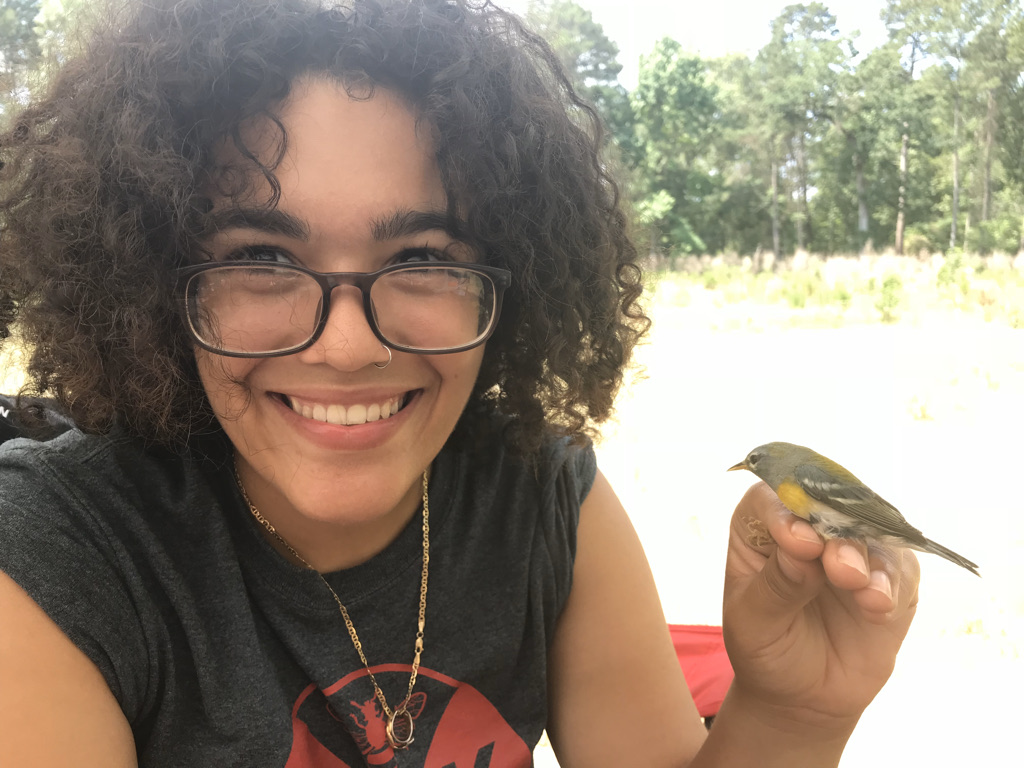Krisangel López: In the midst of chaos. . .there’s always a virus?
The following story was written by Krisangel López as part of Dana Hawley’s Outreach in Biology course.

I held on to my mother’s hand as tightly as I could. The pain in my bones was disorienting. I could feel my consciousness starting to slip away. My body shifted between bouts of freezing and burning. It felt like fire was running through my veins. It was all very confusing to a five-year-old; I wanted to get up, but it was too difficult. I finally succumbed to the pain and fell asleep. When I awoke, I was in our local hospital’s pediatric intensive care unit. The final verdict: Dengue Fever.
Two weeks prior to my diagnosis, my home had been hit with a Category 4 hurricane. Hurricane Georges ravaged the island, hundreds of people died, and hundreds of thousands were left stranded.
Little did we know this would be only the beginning.
The perfect storm was already brewing. The devastating effects of the hurricane created the textbook conditions to lead to one of the worst Dengue epidemics in Dominican history. The massive destruction post-hurricane left stagnant pools of water all over the island--the perfect breeding ground for the world’s deadliest animal, the mosquito.
Many people are terrified of snakes, sharks, and bears. But mosquitoes are responsible for more than one million human deaths per year. This is more deaths than those caused by all other arthropod-transmitted pathogens, snake bites, dog bites, scorpion bites, and human homicides combined.
It’s fascinating to think that such a small animal can wreak such havoc on a planet inhabited by over 7 billion humans. Mosquitoes are the perfect vessel for the distribution of one of the most interesting and complex entities in the world: viruses.

Fast forward to now, where I spend 12 hours a day studying arthropod-borne viruses, or arboviruses, the same culprit that put me in the pediatric intensive care unit 22 years ago. My lab focuses on the development of arbovirus vaccines and the study of virus spread. Arboviruses include pathogens such as Zika virus, Chikungunya virus, West Nile Virus, and many others. Our goal is to create and develop better methods of outbreak prevention.
Currently, I am in the third year of my Ph.D. program at Virginia Tech. My dissertation work focuses on understanding the interactions between arthropod vectors (animals that can transmit a pathogen) and wild birds. Birds are the most common carriers of arboviruses. Birds also travel thousands of kilometers a year and thus play an integral role in the movement and transmission of novel and emerging pathogens.

My lab mates and I spend time in the field collecting mosquitos, ticks, and other arthropods as well as small blood samples from birds to analyze for viruses that might be up and coming in certain areas of North America. We want to be able to anticipate any potential outbreaks and implement the proper strategies if they do occur.

I sometimes wonder what would have happened if I hadn’t gotten so sick long ago. Would I be pursuing a Ph.D. in virology? Would I be an accountant?
Who knows?
What I do know, however, is that the hard work of medical professionals and scientists might be paying off for the many people affected by the plethora of arboviruses plaguing the world. With the advancement of technology, we have been able to increase the efficiency and efficacy of vaccines. This has led to a massive decrease in both morbidity and mortality worldwide. Even in the midst of today’s pandemic, we have the hope to find a solution and a potential cure. Although viruses will always give us a run for our money, we will always work hard to outcompete them.


